At the beginning of 2020, Columbia University Irving Medical Center was getting ready to open its first, centralized biobank.
Biobanks-collections of blood and tissue from patients-have proven essential for understanding human disease and developing new treatments. Over the past few decades, Columbia researchers have built several large biobanks, usually focused on specific diseases, that together hold 1.3 million samples from more than 100,000 individuals.
"These resources have been incredibly valuable, but only accessible to a limited group of researchers," says Muredach Reilly, vice dean for clinical and translational research at the Vagelos College of Physicians and Surgeons and director of the Irving Institute for Clinical and Translational Research. With a centralized biobank, however, samples would be available to a wider range of researchers, accelerating discovery today and safeguarding these resources for decades of biomedical research.
But then the pandemic hit.
The biobank's launch team, including researchers and staff in the Irving Institute, the Department of Pathology & Cell Biology, and the Office for Research, joined forces to fast-track the opening with a changed focus: COVID.
The efforts paid off. Just a few months after the biobank's accelerated launch, researchers were using samples collected from thousands of patients at Columbia and NewYork-Presbyterian, who were eager to help scientists understand the mysterious illness.
"The experience with COVID was a vivid reminder of the power of centralized biobanks," says Michael Shelanski, senior vice dean for research at VP&S, "and it gave us extra incentive to start bringing in more samples from all kinds of patients at CUIMC to spark new medical discoveries."
Later that year, the medical center applied for, and received, an $8 million grant from the NIH to construct a new state-of-the-art facility-the BRIDGE-that will eventually house up to 12 million patient samples.
The medical center marked the launch of BRIDGE during a ribbon-cutting ceremony in early November.
"This is a transformative moment for biomedical research at Columbia," says Reilly. "From rare diseases to cancer, Alzheimer's, and heart disease: the new biobank will shape the future of medicine."
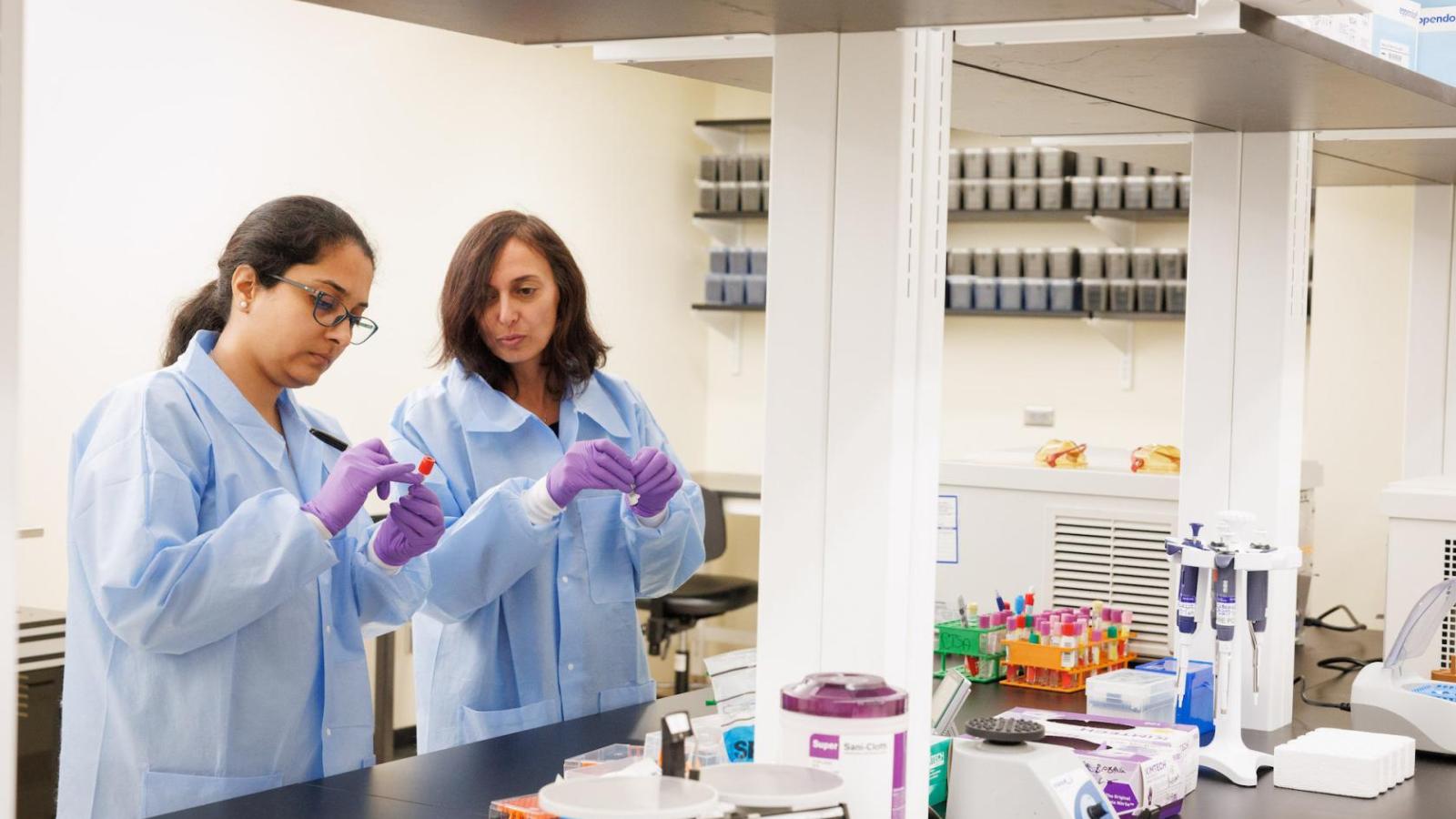
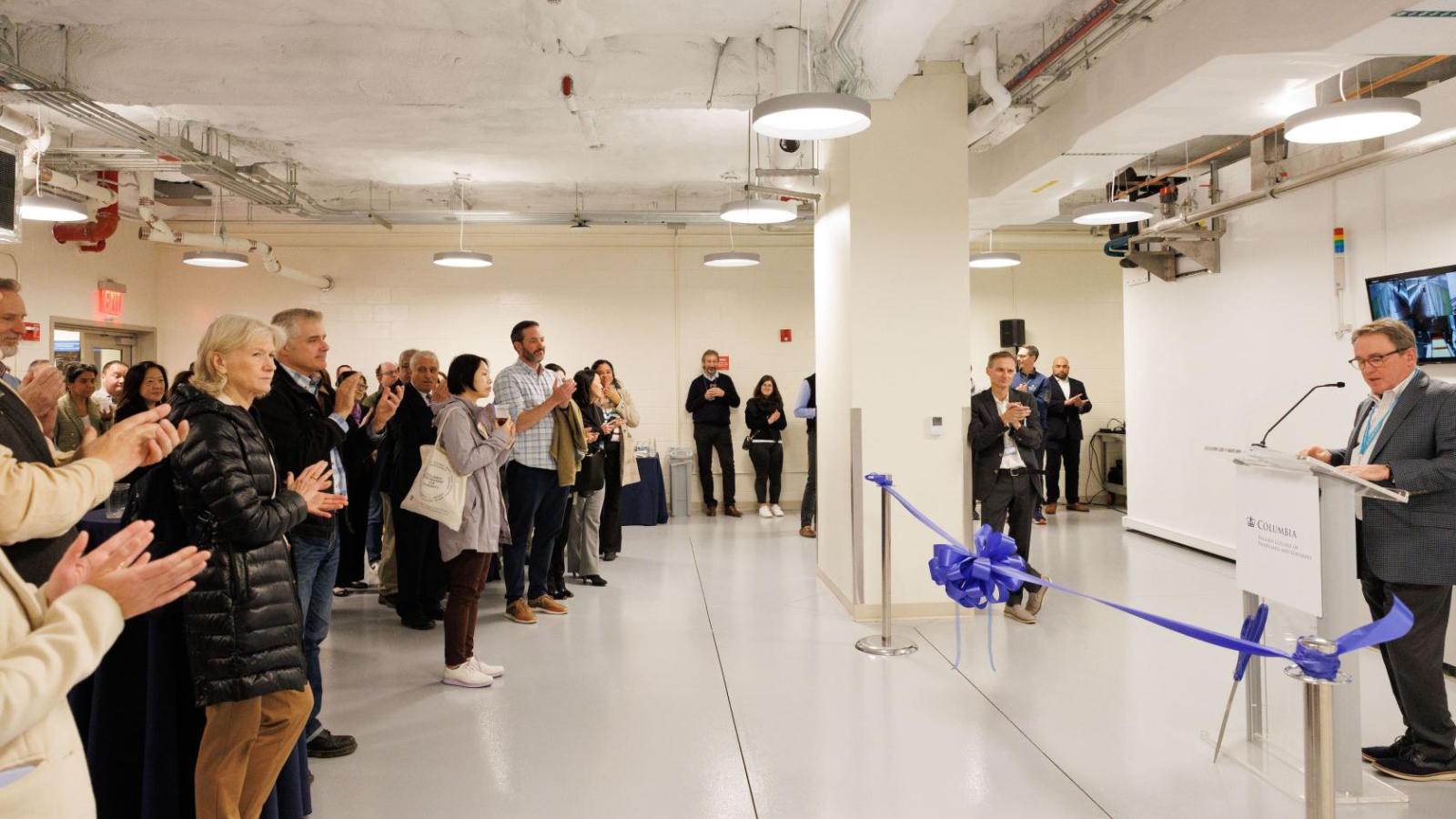
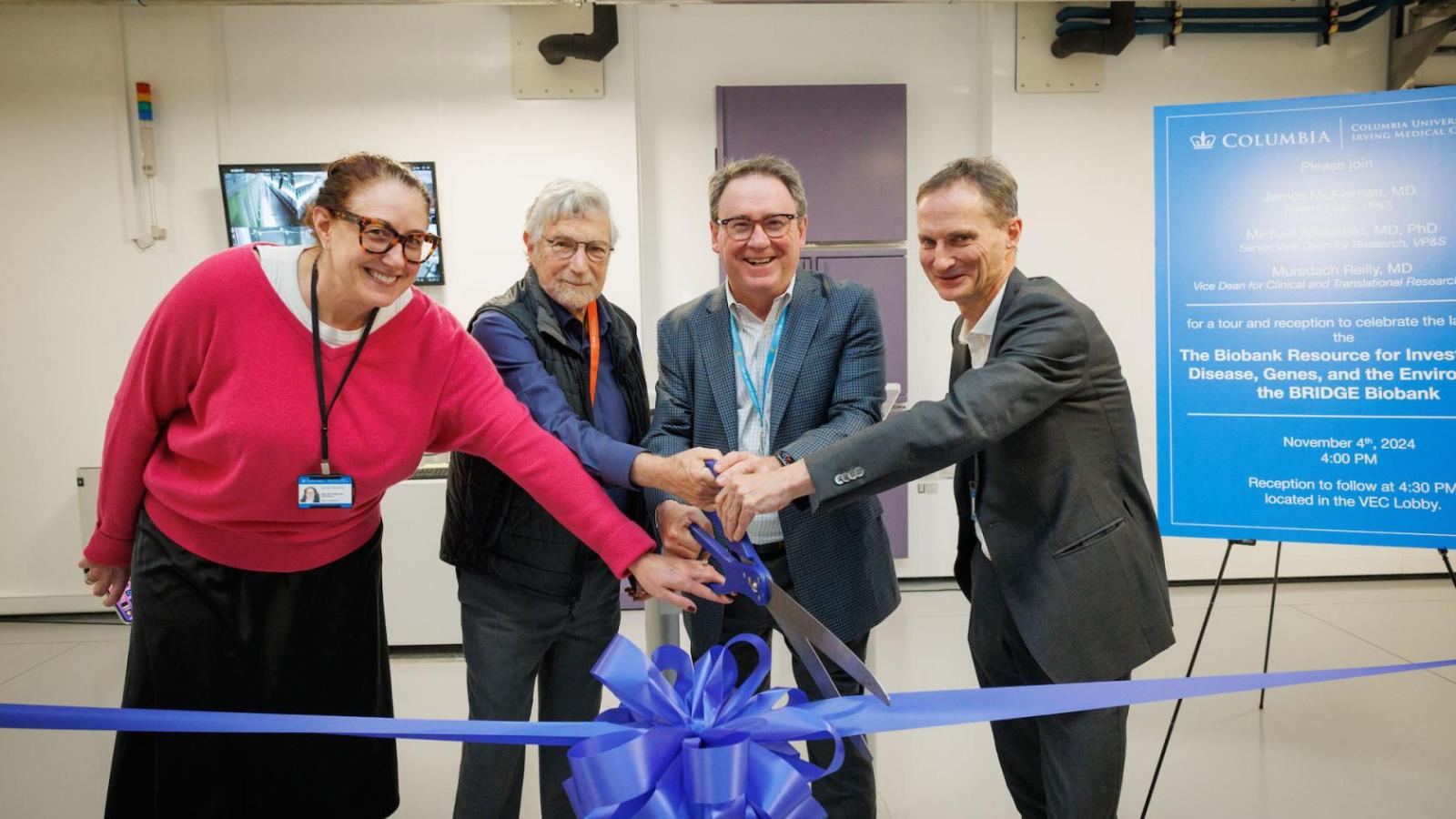
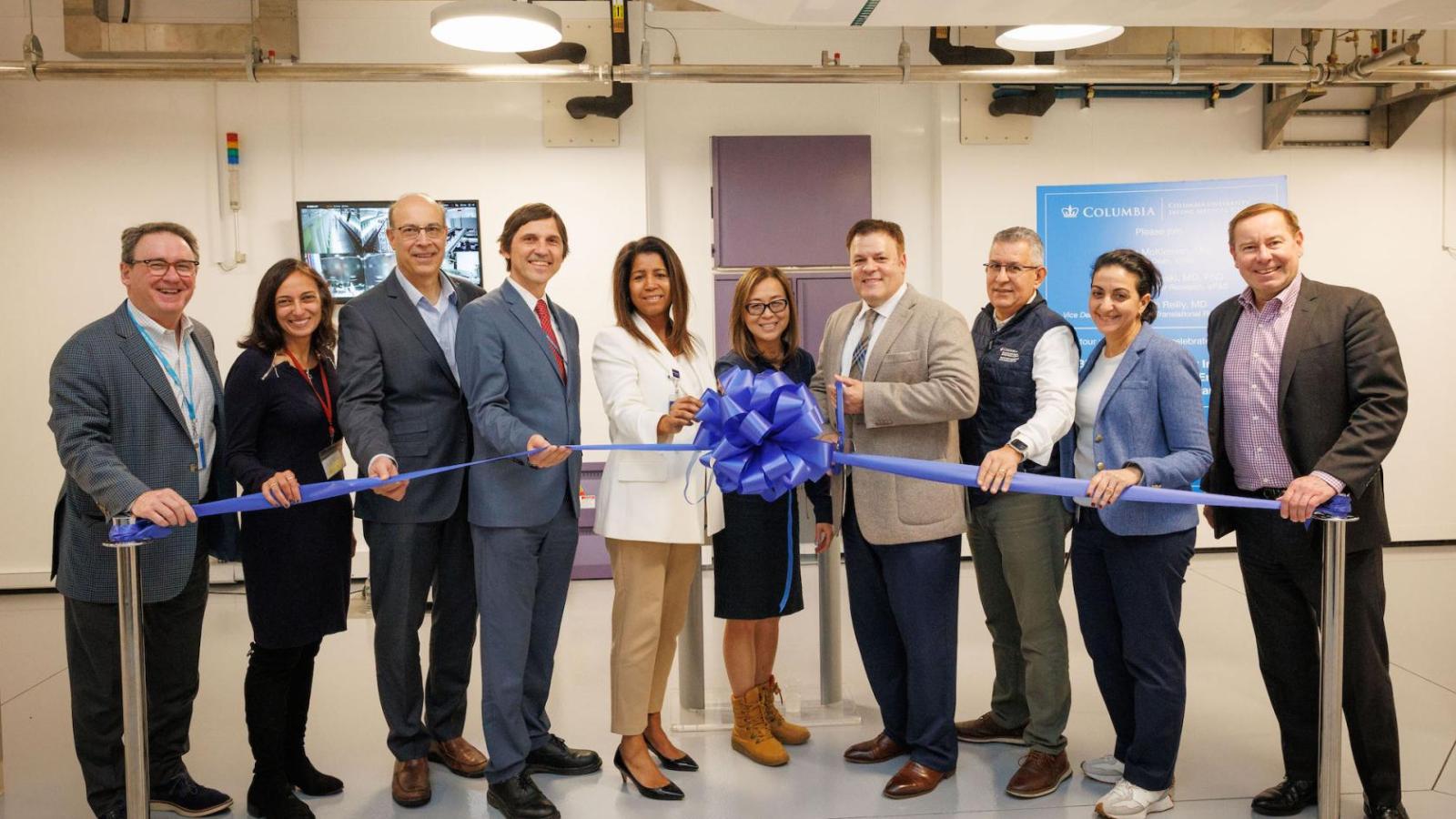
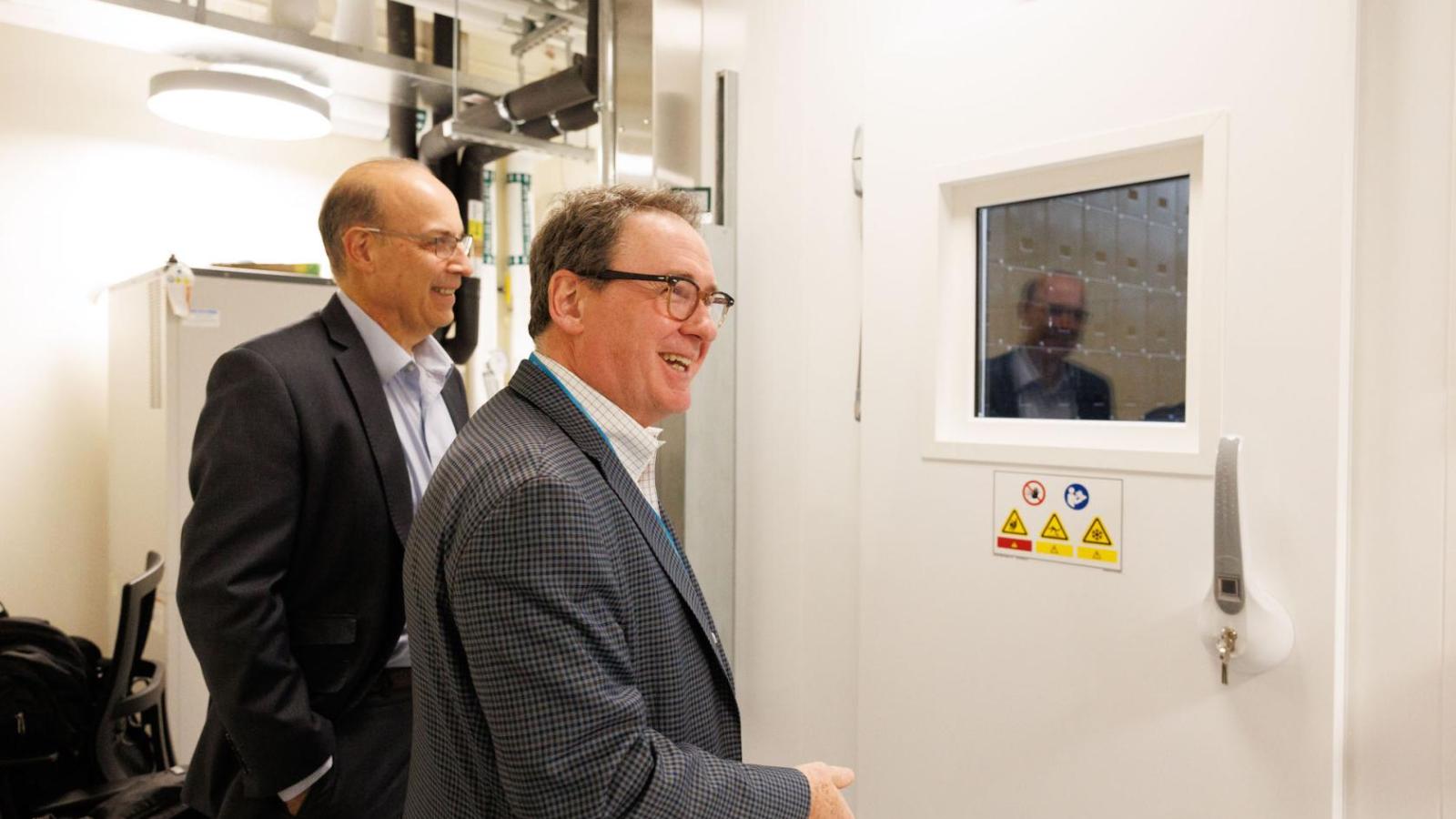
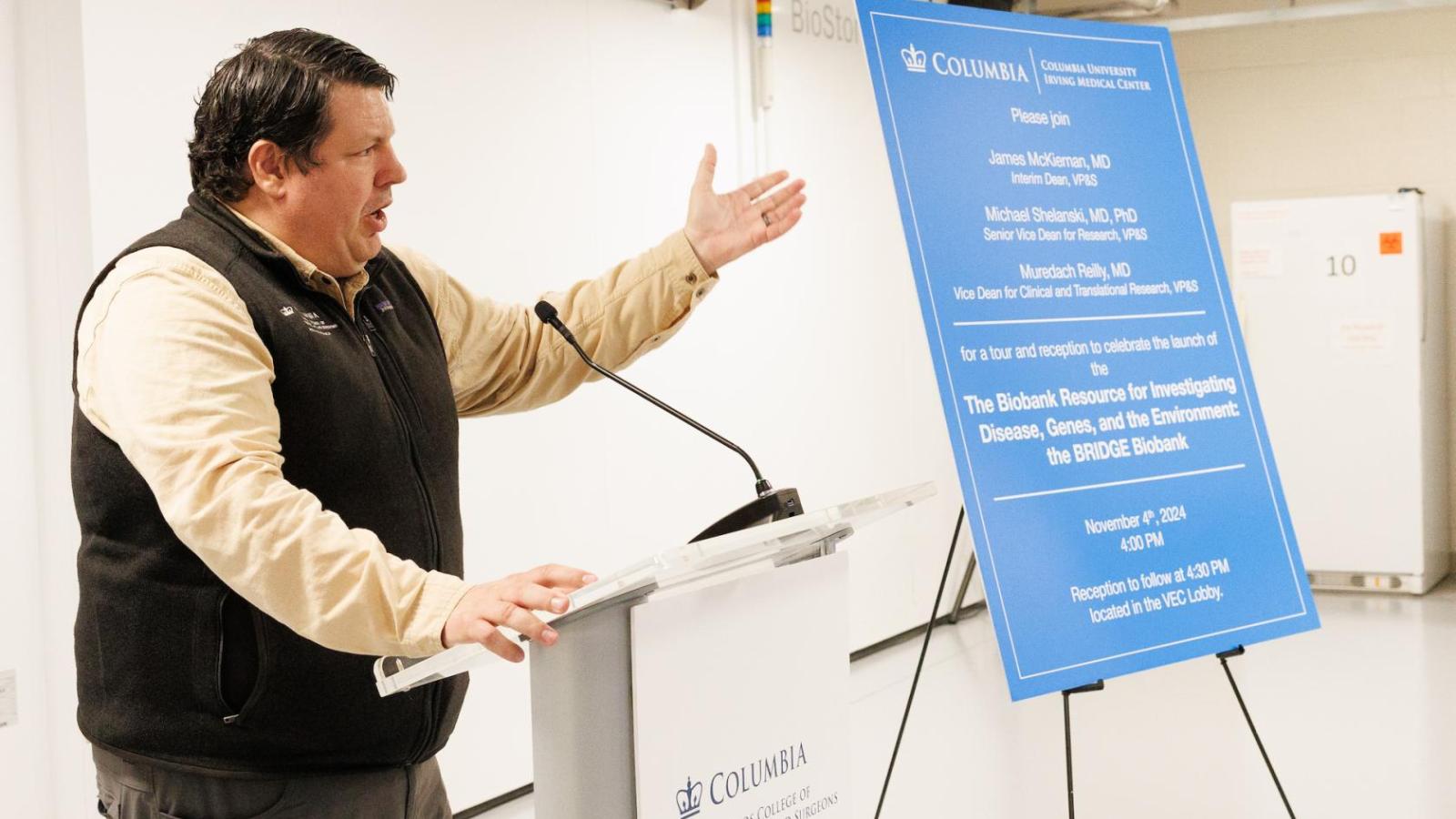
Biobank Resource for Investigating Disease, Genes, and Environment
By early 2025, the new Biobank Resource for Investigating Disease, Genes, and Environment (BRIDGE) facility's automated BioStore Storage System (built by Azenta) will be ready for its first deposits.
The core of the facility is one of the field's most advanced freezer systems. About the size of a shipping container, the BioStore stores liquid biospecimens at -80 C (equivalent to -115 F, colder than average winter temperatures in Antarctica). The glacial temperature ensures that biological material like DNA and proteins-critical for modern biomedical research-will not degrade for years.
Each new sample is prepared by BRIDGE's own team, ensuring each sample is handled with the same, optimal processes. BRIDGE also includes bioinformatics and IT components to link data from patients' electronic health records with their stored samples and to give researchers the ability to query the biobank's holdings.
"The ability to match and integrate patient phenotypic data with readily accessible and retrievable patient samples provides a robust platform for discovery," says Kevin Gardner, chair of the Department of Pathology & Cell Biology, which oversees the administration of BRIDGE, providing scientific oversight of the facility and its handling, storage, and distribution of patient samples.
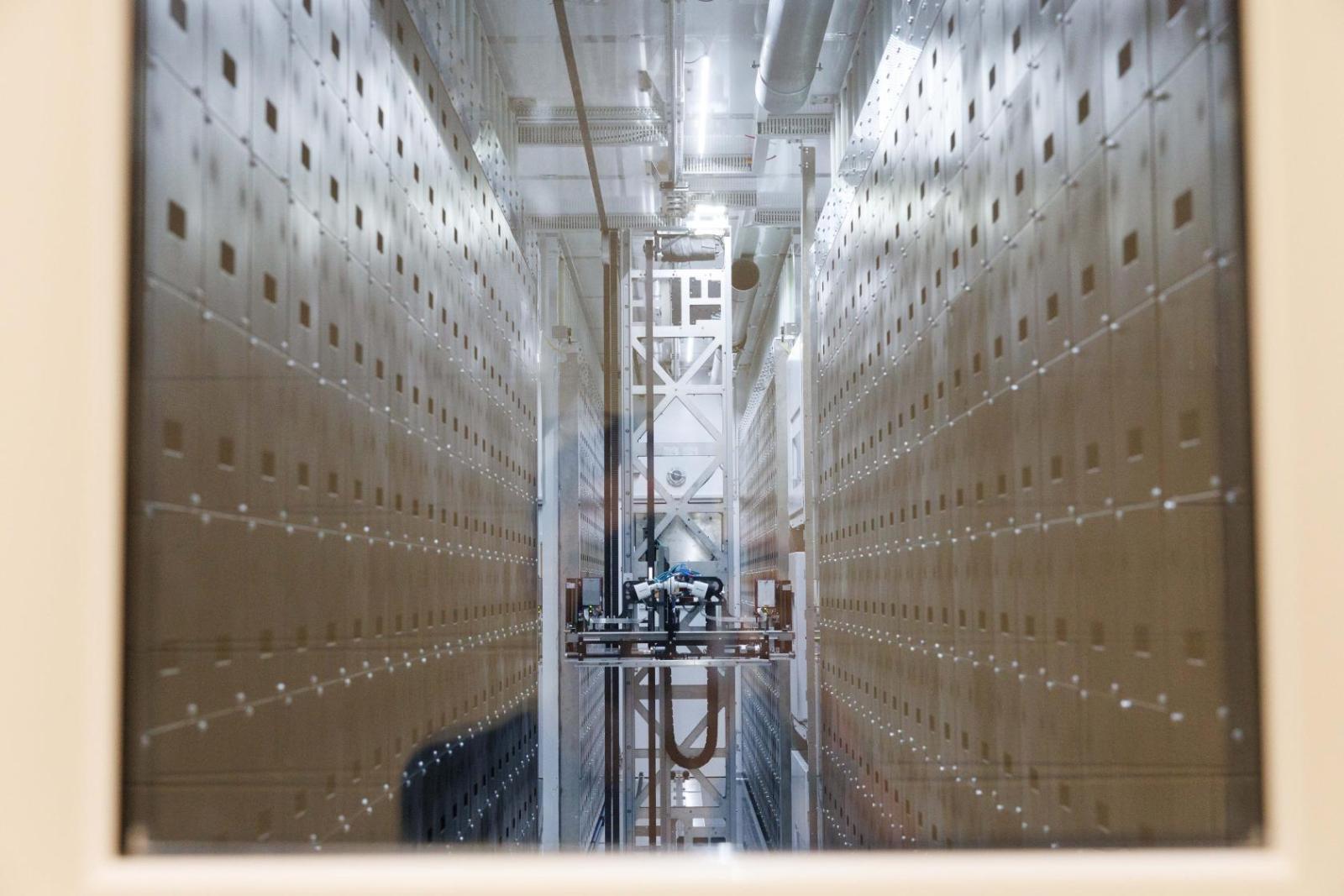
Inside the freezer, a robot runs up and down the central aisle removing requested samples from storage and making new deposits. The robot can run 24 hours a day, increasing the speed with which samples are processed and made available to investigators. Photo by Sirin Samman.
BRIDGE will be jointly supported by VP&S and NewYork-Presbyterian and will leverage Columbia's expertise in bioinformatics in the Department of Biomedical Informatics and the bioinformatics core within the Herbert Irving Comprehensive Cancer Center.
Increasing dividends
More than 50 studies at Columbia now tap the university's existing biobanks; and the new, centralized facility should only increase that number. Just like savings accounts, the biobank's deposits will become more valuable over time as samples and data accumulate.
Early-career investigators, in particular, will get an important boost. "Junior faculty will have ready access to patient samples and data that previously would have taken them years to gather, accelerating the pace of their research and giving them greater momentum," says Aaron Viny, assistant professor of medicine, who has been involved in BRIDGE planning efforts. The central biobank will also free up funds that departments currently spend on their own expensive biobanking operations for exciting pilot projects, often conducted by younger investigators.
More benefits will come from BRIDGE's capacity to collect serial samples from the same patient. Though single "snapshot" samples provide valuable information for many studies, "with a large collection of serial samples from the same patient, it will be easier to understand the progression of a disease, and one day, intervene," says Viny.
With such serial samples, "you can investigate those taken before and after diagnosis of a disease, for example, to find the factors that may have led to the disease developing in the first place."
Patient recruitment
Four years ago, when the biobank's first patients enrolled, the focus was on COVID. Thanks to the biobank's consent protocols, all those samples can also be used for future research that spans all disease areas.
"Our patient consent protocol is a unique strength," says Danielle Pendrick, director of interdisciplinary research initiatives at VP&S, "and allows us to utilize patient samples and data for multiple studies any time in the future."
BRIDGE's strong enrollment and engagement team helps recruit patients into Columbia's centralized biobank, which has accrued more than 10,000 new participants since launching in 2020. Those patients, like those of the entire medical center, are among the most diverse-racially and socioeconomically-in the nation.
"We are centered in the communities of northern Manhattan, Washington Heights, Harlem, and the South Bronx, where our patients live, and our biobank needs to continue to reflect the values and priorities of our community," Reilly says. Since the biobank's beginnings, a community advisory board has helped set its priorities, which include research that should help reduce racial disparities in patient care and increase health equity.
"With dynamic long-term engagement with our patients, this facility can have a great impact on our communities and for people across the city and the world."






